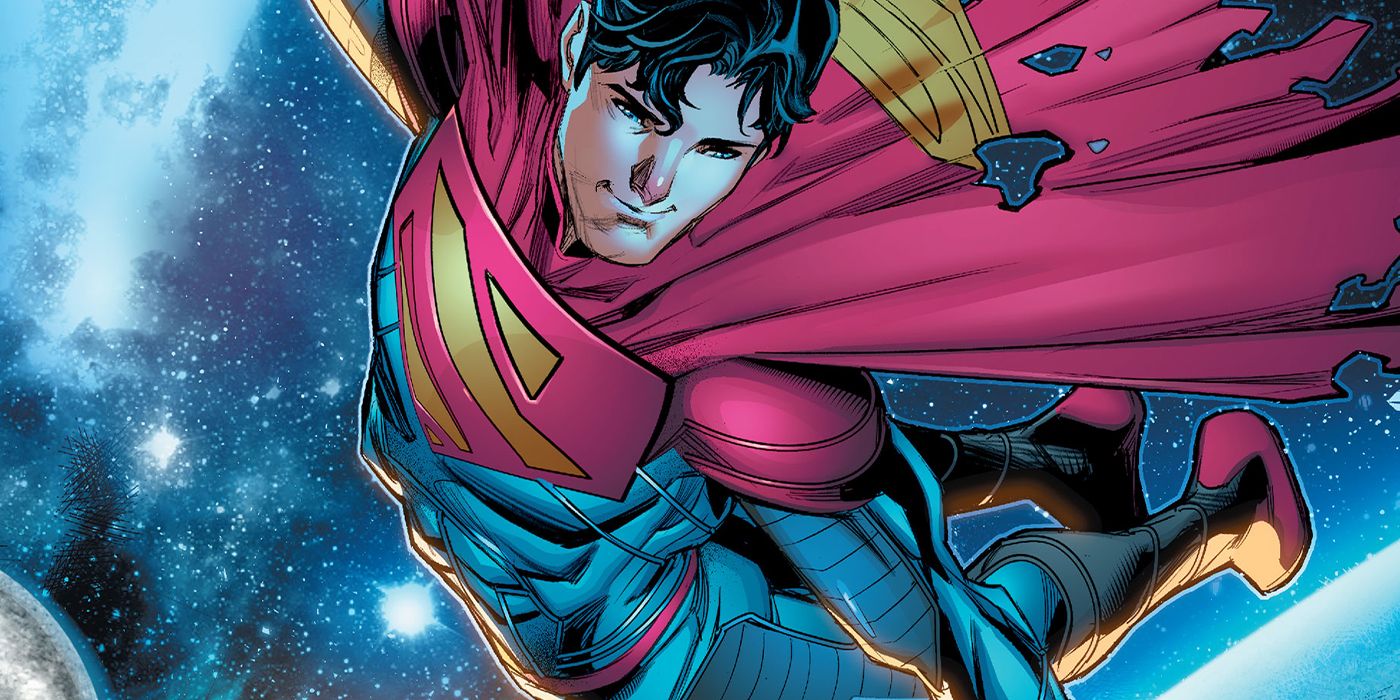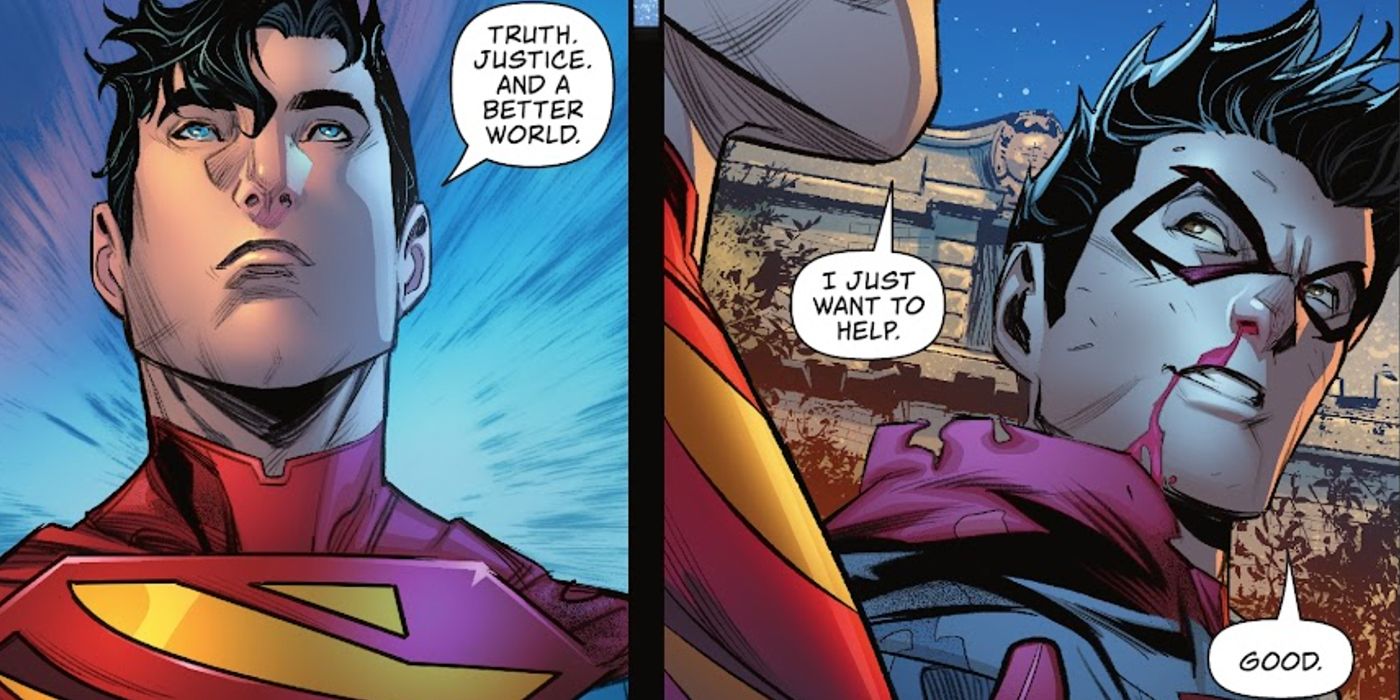
Warning: spoilers for Superman: Son of Kal-El #1 are ahead.
For close to a century now, Superman has remained one of superhero comics' most iconic characters. His motto of "truth, justice, and the American Way" is one of the most recognizable parts of his identity in DC Comics and beyond. However, as times have changed, the exact tenets of the American Way have been brought under close examination. Clearly the world is not in the same place as it was in 1938 when he was first created, and while many other aspects of Superman's story have transitioned well into contemporary times, his motto has remained a contentious part of his legacy.
That said, change is on the horizon for his character, with the release of Superman: Son of Kal-El #1, a new story starring Clark Kent's son, Jon Kent (written by Tom Taylor, art by John Timms, colors by Gabe Eltaeb, and letters by Dave Sharpe). Setting the stage for this next phase of Superman lore, Jon is concerned about how he should best devote himself and his powers to helping the world. Confiding in his best friend and fellow Super Son, Damian Wayne, Jon says that he wants the symbol on his costume to represent, "Truth. Justice. And a better world," marking a departure from his father's motto of "truth, justice, and the American Way."
This change is a bold one, but is ultimately for the better, as Superman does not need the American Way in order to be the hero that readers expect him to be. In fact, it isn't even an original part of his character. Superman is considerably older than most of his fellow costumed superheroes, and with that comes its own historical baggage. And while he has remained fresh in comics, his evolving existence reflects an ongoing question of what readers and creators are to do with characters who embody old-fashioned ideas. And while Superman has never intended to be a symbol of hate, as it would go against his core identity and values, the American Way still has a rocky legacy in both superhero comics and beyond that DC Comics is aware of.

Previously, DC Comics addressed the paradoxical nature of Superman's American Way in The Other History of the DC Universe #3, specifically with regards to how superheroes of color like Katana were not readily welcomed by the American public (written by John Ridley, layouts by Giuseppe Camuncoli, finishes by Andrea Cucchi, colors by José Villarrubia, and letters by Steve Wands). For Katana, who saw aspects of herself in Clark Kent's identity as an outsider, it was difficult to see how America opened its arms for an alien with tremendous powers while she was never afforded the same warmth or trust. As a result, DC is aware of the American Way's spotty history in its own comics, and by moving Jon Kent's Superman away from these ideals, they allow him the chance to define himself for a new era.
Jon Kent stands in the shadow of his father's legacy, and while they have many commonalities, differentiating his ideals in this way is conducive for expanding the scope of Superman's character. The issue sees Jon wanting to tackle huge problems facing the entire planet, like the climate crisis for instance, which are not limited to American borders or interests. Jon's Superman sees himself not as a hero for the American public, but for the entire world. Adopting a global perspective in this case is going to be the best avenue for him to achieve his goals.
The issue's final image of Jon flying over the entire planet in space speaks to this exact idea. At this point, Superman is a beloved character around the world, and it is time that his newest iteration reflect this perspective. This change builds upon previous comics that have already been pushing Superman towards a more global standpoint, making it another way that his character has evolved over time. Superman has always represented a brighter future for the world through kindness and advocacy, and that message has never required a national designation.
No comments:
Post a Comment